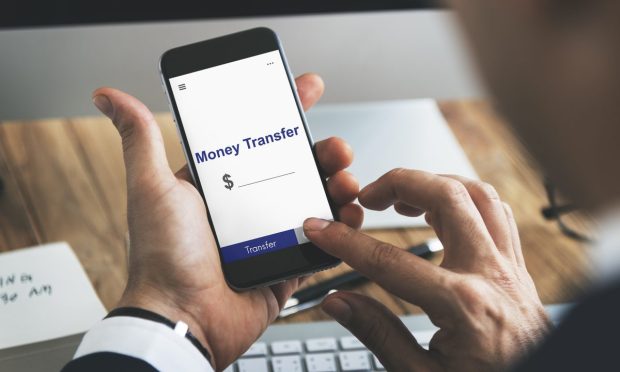Remittances Remain a Huge Business: PSP to Benefit By Offering Blockchain Compatibility

Remittances are a dominant pillar for economic development in lower- and middle-income countries with a substantial migrant demographic. These foreign-based workers in developed countries regularly send funds to their families and friends in their home countries, where they often account for a meaningful portion of local gross domestic product (GDP).
The process is so prevalent — and important — that even the COVID19 pandemic didn’t obstruct the flow of money across borders. According to a World Bank report, the official remittance flow to middle- and lower-income countries reached $540 billion in 2020, with a negligible drop of 1.6% from 2019.
Consumers have a wide array of retail choices for transferring funds abroad. However, there are major pain points that make the process tedious and troublesome. Excessive and highly variable fees and long processing times can make timely payments difficult for those attempting to send or receive funds in urgency. Many consumers are switching to cryptocurrencies as a payment option that allows for a swift and secure transaction.
State of Remittance
The Digital Currency Shift: The Cross-Border Remittances, a report published by PYMNTS in collaboration with Stellar Developmental Foundation, found that a staggering 41-million U.S.-based consumers sent money abroad in the last 12 months, with 59% percent who have increased the number of payments made since the pandemic.
Among nearly 279 survey respondents, 70% of U.S. consumers claimed to have paid a fee to send money abroad, with variable fees averaging 6.2% and fixed fees set at $14.80. The wait time for recipients to receive and access these funds was averaged at 2.4 days. For such consumers, long payment delays and high transaction fees have significantly impacted their transactional experience.
The reason for these pain points is central. Currently, all cross-border payments are conducted through a network of correspondent banks or money transfer providers. There is no central clearing system for these transactions, and they can only occur during bank business hours. Multiple intermediary banks are imposing unique processing fees making the transfer process expensive with each transitional step. Additionally, the documentation required for remittance is also quite extensive. Know your customer (KYC) compliance measures have to be fulfilled depending upon the amount of transfer, and customers are required to provide documents like an ID, passport number or ID photo.
See also: Crypto for Cross-Border Payments Backed By Half of Multinationals, New Study Shows
Shift to Blockchain Technology
Blockchain technology is rapidly evolving as an effective and optimized solution for safe, quick, and cost-efficient money transfers. It addresses the cross-border payment pain points discussed above by adopting a distributed ledger technology (DLT). It is a public ledger that records every transaction occurring on the network, saves identical copies of the transaction on each of the networks’ computers so that all the intermediary partners can review previous entries and record new ones.
Using blockchain technology for cross-border remittance lets the sender and recipient know exactly where their money is in the transaction process. The decentralized nature of the technology effectively minimizes lags and provides guaranteed real-time transactions. While KYC’s might still be necessary across centralized exchanges, the high cost induced by intermediaries on both ends is significantly diminished.
PYMNTS research found that 23% of respondents who made remittance payments to friends or family in other countries used at least one kind of cryptocurrency. Moreover, 13% of consumers claimed that cryptocurrencies were their most used payment method for online cross-border remittances.
See also: Bitcoin, Stablecoins Will Transform El Salvador’s Economy, Stellar Foundation CEO Says
Cryptocurrency as a Deciding Factor
The survey report also finds that among all peer-to-peer (P2P) payment choices, trust is the deciding factor in consumers’ choice of a payment service provider (PSP). Fifty-six percent of consumers cite trustworthiness as a factor that inclines them to choose a specific provider. Correspondingly, 47% believe that the perceived security of their transactions is an additional key factor in assessing the trustworthiness of a PSP, while another 45% credit this to the recipients’ ability to receive funds on the same day.
This creates a significant opportunity for PSP to offer alternatives to traditional remittance payments methods. A considerable U.S. consumer base of 50% of senders of cross-border remittances consider the ability to make payments in cryptocurrency inspires them to choose a PSP, whereas 24% believe the option to send funds that can be received as cryptocurrency as a chief motivator in selecting a PSP.
Cryptocurrency is fast emerging as an accepted payment method by many retailers worldwide, and PSPs are encouraging the trend by enabling cross-border remittance in cryptocurrencies. To catch up with the world, traditional banks and FinTech companies are exploring the use of blockchain technology for cross-border payments. They are considering DLT as the backbone of a new cross-border payments infrastructure to solve inefficiencies and provide faster, more affordable services.
See also: Crypto-Based Remittances on the Rise; Nigeria Leads the African Pack
“At a high level, the shared, immutable ledgers have the potential to change the way we interact with each other and with financial institutions,” said Jason Chlipala, chief operating officer at Stellar Development Foundation, in a conversation with PYMNTS on how banks can revolutionize finance by adopting blockchain technology to realize cost efficiencies and boost financial inclusion.
“Remittances remain a huge business. Offering different services and allowing customers to ‘hook in’ to these digital asset-based use cases can create additional revenue streams,” he said. “These could be a digital wallet in which customers can hold stable coins that they would then put on exchanges or use in DeFi activities.”
